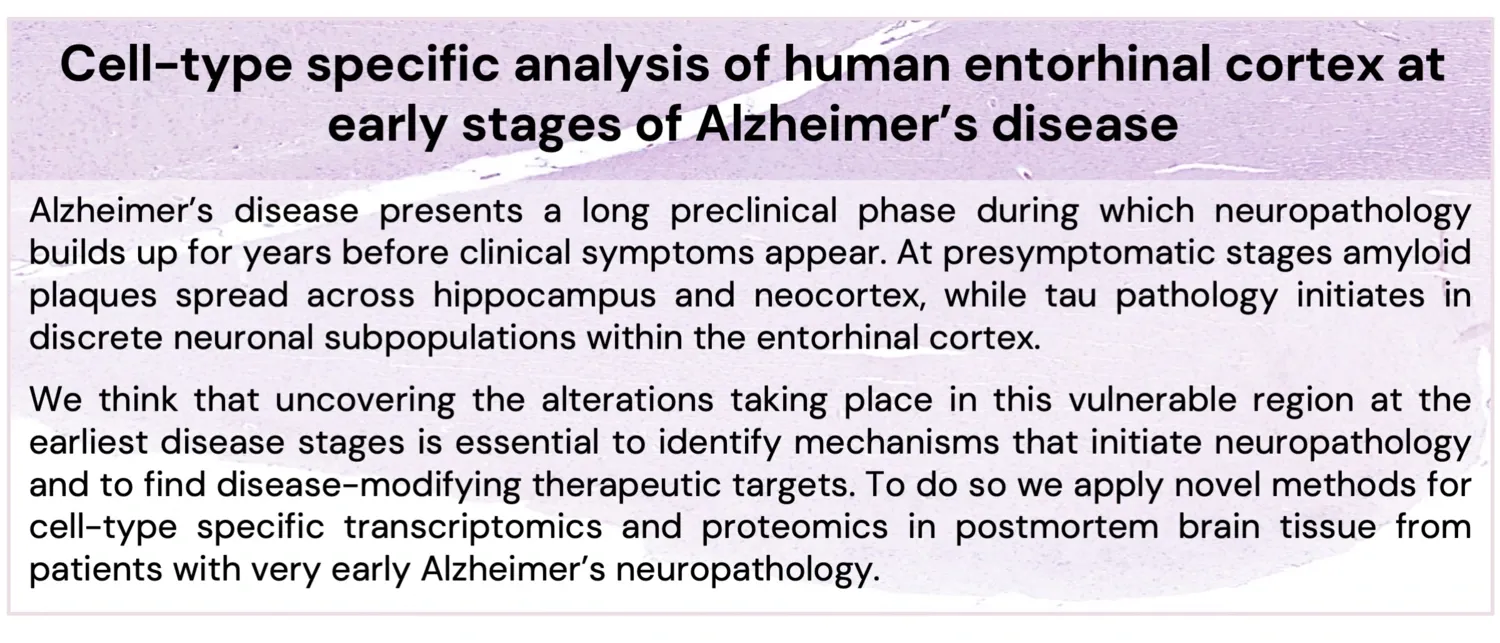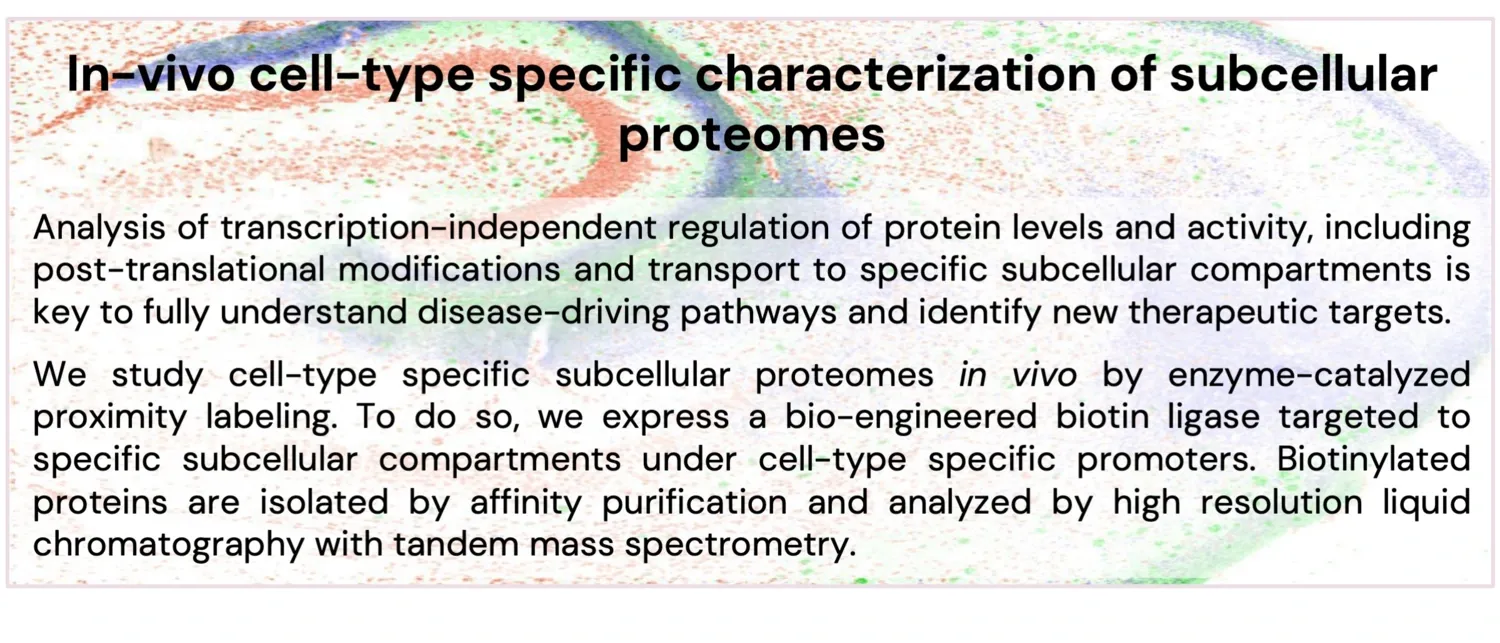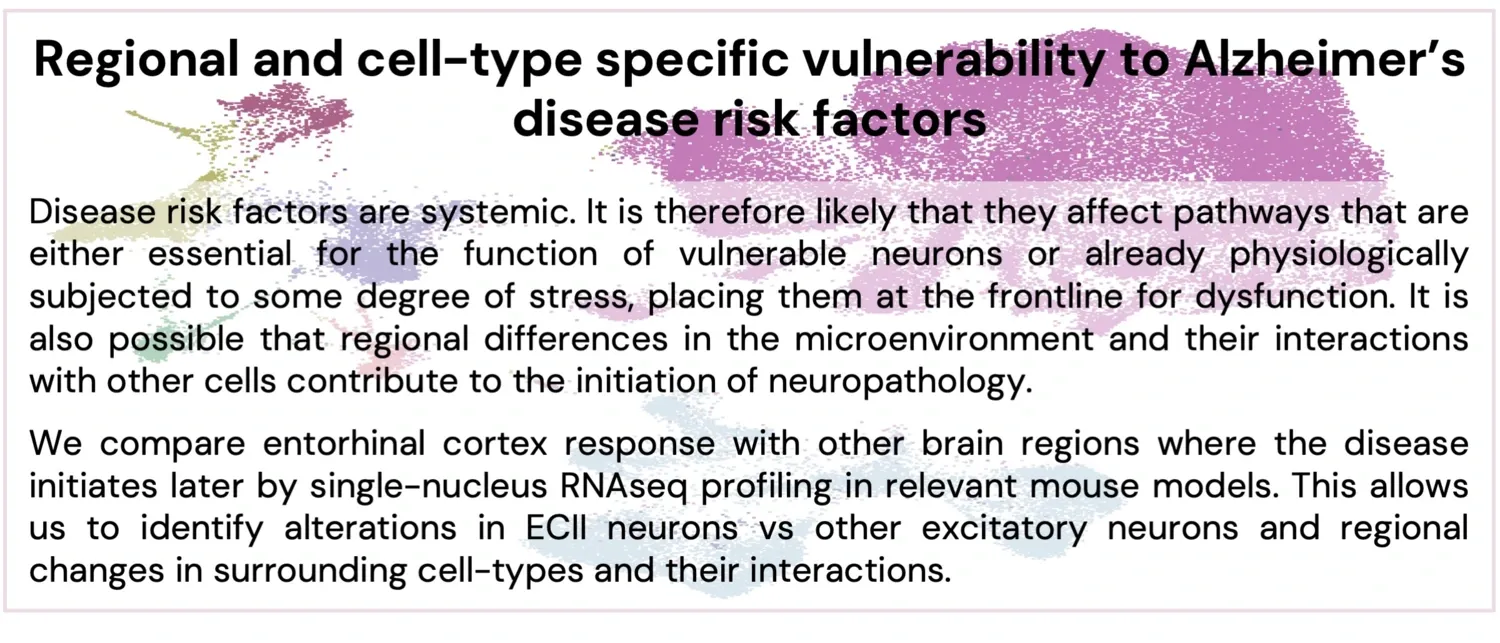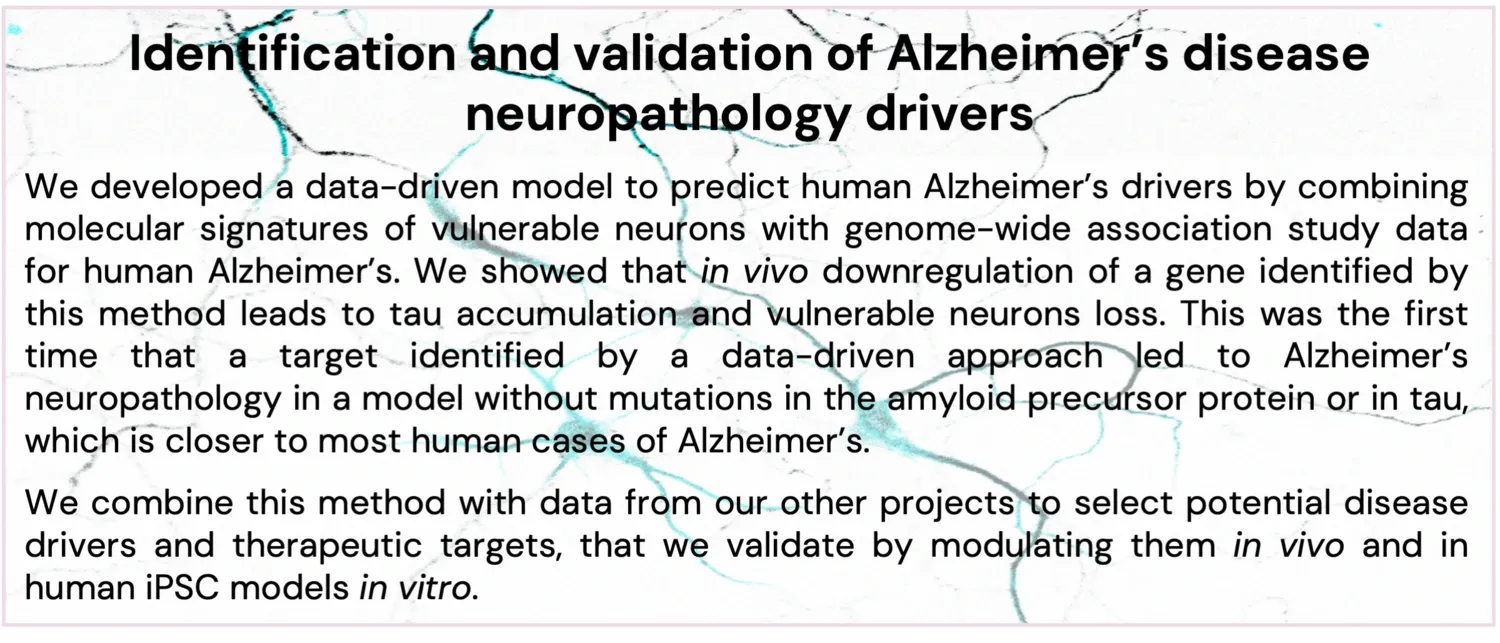 Photo: N/A
Photo: N/ATV4 nyheterna
 Photo: Pixabay
Photo: PixabayAlzforum news
 Photo: The Conversation
Photo: The ConversationThe Conversation
 Photo: Liza Simonsson
Photo: Liza SimonssonKI news
 Photo: Liza Simonsson
Photo: Liza SimonssonArticles and webinars on integrating sex or gender in research
 Photo: Sara Friberg.
Photo: Sara Friberg.
Alzheimer’s disease (AD) results from a complex interaction of genetic, environmental, and age-related factors. Our research focuses on the interplay between biological sex (female vs. male) and cholesterol-related environmental and genetic risk factors (hypercholesterolemia, APOE4 genotype), using mouse models and human clinical and postmortem samples. By identifying sex-specific pathways that drive disease progression, we aim to develop tailored strategies for AD prevention and treatment.

 Photo: N/A
Photo: N/A Photo: Pixabay
Photo: Pixabay Photo: The Conversation
Photo: The Conversation Photo: Liza Simonsson
Photo: Liza Simonsson Photo: Liza Simonsson
Photo: Liza Simonsson Photo: Sara Friberg.
Photo: Sara Friberg.🧬 Cholesterol, Brain Health & Alzheimer’s
Alterations in brain cholesterol metabolism are central to neurodegenerative processes. We explore how the APOE4 genotype, brain cholesterol turnover, and cholesterol-derived metabolites (such as oxysterols) influence cognitive function and AD progression.
🧠 Sex Differences in Alzheimer’s Risk
Women are at a higher risk for Alzheimer's disease (AD), partially due to hormonal changes, among other factors, that affect brain metabolism. Our research investigates how sex hormones, cholesterol metabolism, and genetic factors contribute to sex-specific disease pathways and influence treatment responses.
🔬 CYP46A1 as a Therapeutic Target for women at risk
Our research has shown that overexpressing CYP46A1 improves memory in aging and estrogen deprived female mice. We explore pharmacological and genetic strategies to increase CYP46A1 activity as a potential neuroprotective therapy for women at higher risk of AD.
🔍 Early Biomarkers for Women at Risk
We analyze biomarkers in blood and cerebrospinal fluid, such as cholesterol metabolites, to identify high-risk women and improve early detection strategies for AD.
💊 Multi-Drug Therapies & Sex-Specific Effects
Many older adults, including AD patients, take multiple medications (polypharmacy), but their effects differ by sex. We investigate how commonly prescribed drug combinations impact cognition, metabolism, and AD progression using preclinical models and human cohort data to guide personalized treatment strategies .
Karolinska Institutet, Neurobiology Care Sciences and Society, Bioclinicum, Solnavägen 30, Stockholm, Sweden
Our research is focused on understanding how different genetic and non-genetic risk factors and disease drivers trigger the early degeneration of specific regions and neuronal subpopulations in Alzheimer's disease. To achieve this goal we apply a wide variety of cell-type specific transcriptomics and proteomics approaches in human post-mortem brain samples, mouse models and in-vitro systems.

Rodriguez-Rodriguez P et al. bioRxiv, 2025:
https://pubmed.ncbi.nlm.nih.gov/39803521/



Rodriguez-Rodriguez P et al. Brain, 2024:
https://pubmed.ncbi.nlm.nih.gov/38462574/
Dr. Jean-Pierre Roussarie. Boston University Chobanian & Avedisian school of medicine (Boston, USA). https://www.bumc.bu.edu/anatneuro/roussarie-lab/
Identification of tau pathology drivers in Alzheimer’s disease vulnerable neurons.
Roussarie JP et al. Neuron, 2020:https://pubmed.ncbi.nlm.nih.gov/32603655/
Dr. Joana Braga Pereira. Karolinska Institute (Sweden). https://ki.se/en/research/research-areas-centres-and-networks/research-groups/brain-connectomics-pereiras-lab-joana-pereiras-research-group
Region-specific neuroimaging-based genome-wide association study to identify novel risk and resilience factors for Alzheimer’s disease.
Dr. Ana Milosevic. The Rockefeller University (NYC, USA). https://shahamlab.rockefeller.edu/research.php
Region-specificity of astrocytes and their contribution to Alzheimer’s disease and major depressive disorder.
Zhang et al. bioRxiv, 2024. https://pubmed.ncbi.nlm.nih.gov/39803419/
Zhang et al. bioRxiv, 2022. https://doi.org/10.1101/2022.11.16.515390
Alzheimerfonden: https://www.alzheimerfonden.se/nyheter/alzheimerfonden-samlade-in-81-miljoner-kronor-under-2024/
KID-funding: https://staff.ki.se/doctoral-education/internal-ki-funding-for-doctoral-education/kid-funding
Private initiative “Innovative ways to fight Alzheimer’s disease- Leif Lundblad Family and others”
Petrus och Augusta Hedlunds Stiftelse: http://www.hedlundsstiftelse.se
Konung Gustaf V:S och drottning Victoria Stiftelse: https://frimurarorden.se/konung-gustav-vs-och-drottning-victorias-frimurarestiftelse/
European commission MSCA actions: https://ec.europa.eu/info/funding-tenders/opportunities/portal/screen/opportunities/projects-details/31045243/799638/H2020
Stiftelsen för Gamla Tjänarinnor: https://www.stiftelseansokan.se/Pages/GamlaTjanarinnor.aspx
Gun och Bertil Stohnes Stiftelse: https://www.stohnesstiftelse.se/sv-SE
Julen Goicolea, 2021: Translational studies on Alzheimer’s disease : a focus on cholesterol metabolism, thioredoxin-80 and microglia function
María Latorre Leal, 2024: The role of oxysterols in neurodegeneration : implications for cognitive function, maternal effects, and sex-specific differences
Francesca Eroli, 2025: Toward precision medicine : sex-specific effects of multi-drug therapies in mouse models of aging and Alzheimer's pathology